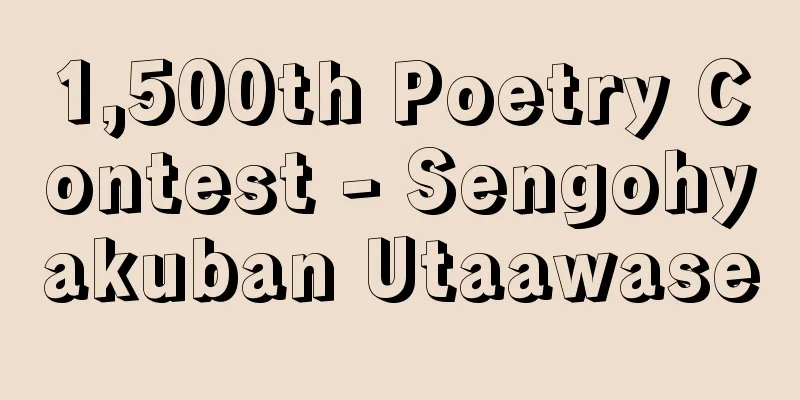Georges Canguilhem

|
French historian and philosopher of science. Born in Castelnaudary in southwestern France. Entered the École Normale Supérieure (Higher Normal School) in 1924, then studied philosophy at the Sorbonne and medicine at the University of Strasbourg. At the Sorbonne, he studied under Bachelard and pursued a career as a researcher in the philosophy of science. He succeeded Bachelard as director of the Institute of History of Science and Technology at the University of Paris, and taught history and philosophy of science at the Sorbonne from 1955 to 1971. In France, there is an academic tradition, such as that of Branschbeck and Bachelard, that concretely traces the historical formation of scientific concepts, and ponders the question of how a certain concept inherits the traditions that came before it, and how it still subtly changes its meaning from one era to the next, and what the philosophical meaning is when it changes its meaning. It can also be said to be a history of science supported by philosophical reflection. It is usually called scientific epistemology, or epistemology in French. Canguilhem is a representative thinker of epistemology who was active in the generation after Bachelard, that is, from the 1940s to the 1960s. Moreover, while Bachelard focused mainly on the epistemological considerations of mathematics, physics, and chemistry, Canguilhem made medicine and biology his main research subjects, as if to complement Bachelard. A detailed analysis of the achievements of both Bachelard and Canguilhem will allow us to touch the essence of French scientific epistemology. Canguilhem was a prolific scholar. He wrote only two books dealing with a single subject: La formation du concept de réflexe aux ⅩⅦ e et ⅩⅧ e siècles (1955) and Le normal et le pathologique (1966). The former traces the historical paradox that the understanding of the phenomenon of reflex, which seems to be a representative phenomenon of mechanical factors hidden in living organisms, did not originate from Descartes's theory of humanity, which sought to fully explain the body mechanically, but was rather shaped by physician Thomas Willis and others who were closer to medical chemistry and natural philosophy. In the latter, he examines the theories of physiologists such as Claude Bernard and ultimately leads to the conclusion that the idea that the difference between normality and pathology should be objectively grasped by quantitative measurement such as blood sugar level should be rejected. There is no objective physiology in the sense of distinguishing normality from pathology from the totality of quantification. This is because there is inevitably an intervening phase of qualitative norms from the side of the living organism that perceives pathology as pathology. This paradoxical conclusion sent shock waves through French medical philosophy. Apart from these two essays, two other notable works are the two collections of essays La connaissance de la vie (1952) and Études d'histoire et de philosophie des sciences (1968). In addition to discussions of Comte and Bernard, these series of essays, which present vitalism and the concept of the environment, as well as the philosophical meaning of the unique existence of monsters, are all excellent works supported by a broad perspective and painstaking research into materials. Philosophical reflection on the historical evolution of scientific concepts is by nature a specialized field, and is by no means popular with the general public. However, Canguilhem's work had a profound influence on many of the brilliant minds who built modern French thought, such as Foucault and Althusser. If you want to truly understand French thought in the second half of the 20th century, it is essential to become thoroughly familiar with Canguilhem's work. [Osamu Kanamori May 19, 2015] "Normality and Pathology" translated by Takizawa Takehisa (1987, Hosei University Press)" ▽ "The Formation of the Concept of Reflex: The Origin of Cartesian Physiology" translated by Kanamori Osamu (1988, Hosei University Press)" ▽ "Studies in the History and Philosophy of Science" supervised by Kanamori Osamu (1991/New Edition, 2012, Hosei University Press)" ▽ "Recognition of Life" translated by Sugiyama Yoshihiro (2002, Hosei University Press)" ▽ "The Genealogy of French Scientific Epistemology" by Kanamori Osamu (1994, Keiso Shobo) [References] | | | | | | |Source: Shogakukan Encyclopedia Nipponica About Encyclopedia Nipponica Information | Legend |
|
フランスの科学史家、科学哲学者。フランス西南部のカステルノダリーに生まれる。1924年エコール・ノルマル・シュペリュール(高等師範学校)に入学し、その後ソルボンヌで哲学を、ストラスブール大学で医学を修める。ソルボンヌではバシュラールに師事して科学哲学研究者の道を歩む。バシュラールの後任としてパリ大学科学史・技術史研究所長を務め、1955年から1971年までソルボンヌで科学史・科学哲学を講じた。 フランスにはブランシュビック、バシュラールらのように、科学的概念の歴史的な形成を具体的にたどり、ある概念がどのようにそれまでの伝統を受け継ぎ、なおも時代ごとに微妙にその意味を変えていくのか、そしてそれが意味を変えていくときの哲学的意味はなんなのか、という問題を熟考する学問的伝統がある。それは、哲学的反省意識に支えられた科学史であるともいえる。普通、それは科学認識論、またはフランス語をそのままとってエピステモロジーとよばれる。カンギレムは、バシュラールの後の世代、つまり1940年代から1960年代にかけて活躍したエピステモロジーの代表的思想家である。しかも、バシュラールがおもに数学、物理学、化学の認識論的考察に焦点を絞ったのに対して、あたかもそれを補完するかのように、カンギレムは、医学、生物学を主要な研究対象にした。バシュラールとカンギレム二人の業績を緻密(ちみつ)に分析するなら、フランス科学認識論の神髄に触れられる。 カンギレムは寡作な学者だった。単独の主題を扱った著書としては『反射概念の形成』La formation du concept de réflexe aux ⅩⅦe et ⅩⅧe siècles(1955)と『正常と病理』Le normal et le pathologique(1966)の2冊があるのみである。『反射概念の形成』は、生体のなかに潜む機械的因子の代表的現象であるように思える反射という現象の理解が、まさに身体を機械論的に説明し尽くそうとしていたデカルトの人間論に端を発するのではなく、むしろ医化学や自然哲学に近い立場にいた医師トーマス・ウィリスらによって形づくられていったという歴史的な逆説を跡づけたものである。また、『正常と病理』は、正常と病理との差を、血糖値のような定量的把握によって客観的に把握できるはずだと考える発想を生理学者クロード・ベルナールらの学説を検討しながら最終的には否定するという結論に導く。定量化の総体から正常と病理を見極めるという意味での客観的生理学は存在しない。なぜならそこには病理を病理と感じる、生物の側からの質的規範の位相が不可避的に介在しているからだ。この逆説的結論は、フランスの医学哲学に激震を与えた。 この二つの論考以外の業績のなかで特記すべきなのは『生命の認識』La connaissance de la vie(1952)と『科学史・科学哲学研究』Études d'histoire et de philosophie des sciences(1968)という2冊の論文集であろう。コントやベルナールに関する論考などのほか、生気論や環境概念の分析、さらには怪物という特殊な存在がもつ哲学的意味などを提示したそれら一連の論考は、幅広い視野と地道な資料調査に支えられた秀作ぞろいである。 科学的概念の史的変遷に関する哲学的省察は、本来特殊な専門領域であり、けっして一般受けするようなものではない。だが、カンギレムの仕事はフーコーやアルチュセールなど、フランス現代思想を築きあげた多くの英才に深い影響を与えた。20世紀後半のフランス思想を真に理解しようと思うのであれば、カンギレムの業績を知悉(ちしつ)することは、必須の要件である。 [金森 修 2015年5月19日] 『滝沢武久訳『正常と病理』(1987・法政大学出版局)』▽『金森修訳『反射概念の形成――デカルト的生理学の淵源』(1988・法政大学出版局)』▽『金森修監訳『科学史・科学哲学研究』(1991/新装版・2012・法政大学出版局)』▽『杉山吉弘訳『生命の認識』(2002・法政大学出版局)』▽『金森修著『フランス科学認識論の系譜』(1994・勁草書房)』 [参照項目] | | | | | | |出典 小学館 日本大百科全書(ニッポニカ)日本大百科全書(ニッポニカ)について 情報 | 凡例 |
>>: Leisurely friends - Kankyo no tomo
Recommend
FNRSIII - FNRSIII
…The history of deep sea diving is said to have b...
Krasnaya gvardiya (English spelling)
…It was established by a decree of the Soviet gov...
Kiridashi (Kabuki) - Kiridashi
…A roof is constructed on top of it, and banks ar...
Gluten - Guruten (English spelling) gluten
Put 10 grams of flour and 6-7 milliliters of wate...
《Kissaben》 - Kissaben
…Kashin brought about a breakthrough in the world...
Sea and mountain
〘Noun〙① Sea and mountain. Sea and mountain. ※Man&#...
Kusazoshi - Kusazoshi
A genre of novels from the Edo period. A general ...
Josetsu - Josetsu
Years of birth and death unknown. A painter-monk ...
Logography
…In ancient Greek, it means “narrator of a story....
Vienna Psychoanalytic Society
...While the first two books are educational, the...
Emmerich Kálmán
A Hungarian-born composer. He was active mainly i...
Nagara River
A river that flows south through the center of Gif...
Akenogahara
A plateau on the left bank near the mouth of the ...
Kimono fabric - kijaku
This refers to Japanese fabric for tailoring into...
Wiehert, E.
...With the publication of Austria's F. Salte...









